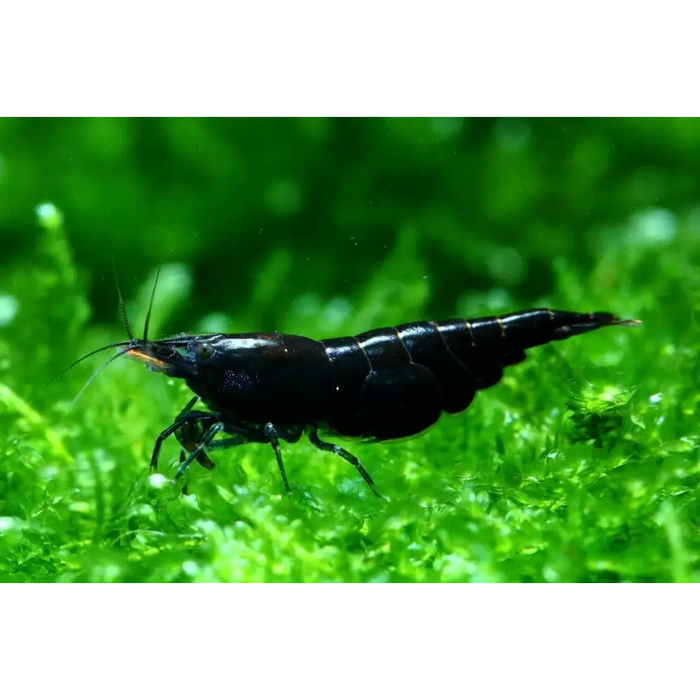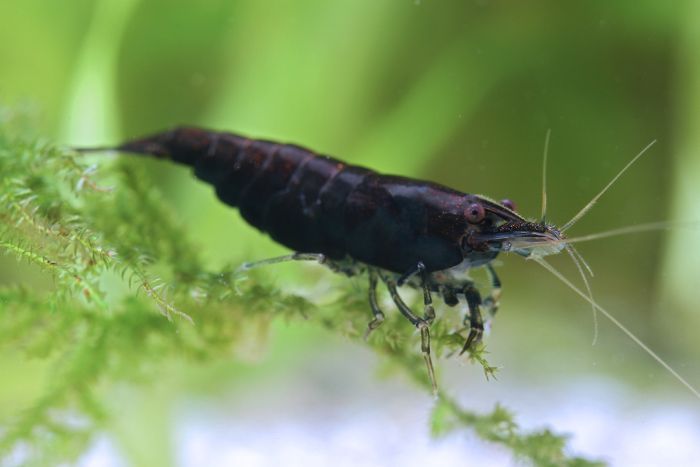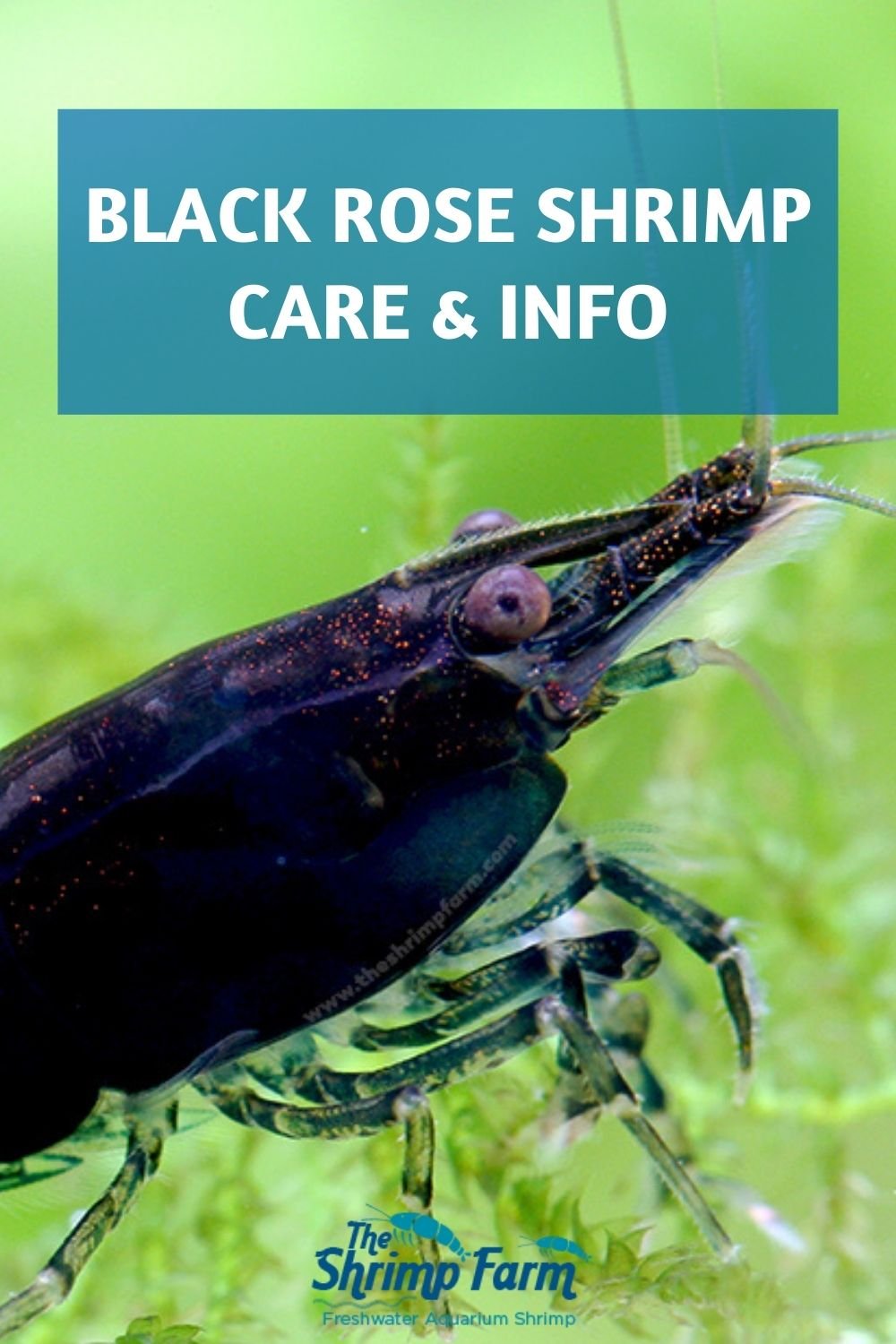Black Rose Shrimp can suffer from bacterial infections and poor water quality. Stress and improper diet also affect their health.
Black Rose Shrimp are a popular choice among aquarists due to their striking appearance and ease of care. Despite their resilience, these shrimp can face health challenges that hobbyists must address. Ensuring optimal water quality, maintaining a balanced diet, and monitoring for signs of stress or disease are crucial steps.
Regular tank maintenance and proper acclimation techniques help prevent common issues. Proactive care helps these shrimp thrive in a home aquarium, providing a vibrant and healthy addition to any aquatic setup. Understanding potential health problems allows enthusiasts to take timely action, ensuring the longevity and well-being of their Black Rose Shrimp.

Credit: aquaticarts.com
Common Health Issues
Black Rose Shrimp are popular in aquariums due to their striking color. They are generally hardy but can face several health problems. Understanding these issues helps keep your shrimp healthy and thriving. Below are some of the most common health concerns for Black Rose Shrimp.
Parasites
Parasites are a major concern for Black Rose Shrimp. They can cause lethargy and loss of appetite. Common parasites include:
- Vorticella: Appears as white fuzz on shrimp’s body
- Scutariella Japonica: Looks like tiny white worms on gills
Both parasites can be treated with salt baths or specialized medications. Regular tank maintenance reduces the risk of parasites.
Bacterial Infections
Bacterial infections are another common issue. They often result from poor water quality. Symptoms include:
- Red or white patches on the shrimp’s body
- Swollen areas or open sores
Treat bacterial infections with antibiotics. Ensure you maintain clean water to prevent these infections.
Fungal Infections
Fungal infections are less common but can be serious. They usually appear as white or gray patches. Symptoms include:
- White or gray cotton-like growths on the body
- Decreased activity and appetite
Treat fungal infections with antifungal medications. Regular water changes and tank cleanliness help prevent these infections.
| Issue | Symptoms | Treatment |
|---|---|---|
| Parasites | White fuzz, tiny worms | Salt baths, medications |
| Bacterial Infections | Red or white patches, swollen areas | Antibiotics |
| Fungal Infections | White or gray patches, decreased activity | Antifungal medications |
By being aware of these common health issues, you can ensure your Black Rose Shrimp remain healthy and vibrant in your aquarium.
Signs Of Illness
Black Rose Shrimp are beautiful and delicate creatures. Keeping them healthy requires careful attention. Knowing the signs of illness is crucial for their well-being. Recognizing these signs early helps provide timely care.
Behavioral Changes
Behavioral changes are often the first indication of illness. Healthy shrimp are active and curious. Watch for these changes:
- Reduced Activity: Lethargic shrimp may be unwell.
- Hiding More: Sick shrimp might hide more frequently.
- Erratic Swimming: Unusual swimming patterns signal distress.
- Loss of Appetite: Refusal to eat is a red flag.
Physical Symptoms
Physical symptoms often accompany behavioral changes. Look closely at your shrimp for these signs:
| Symptom | Description |
|---|---|
| Discoloration | Faded or patchy color indicates stress or disease. |
| White Spots | White spots can mean a parasitic infection. |
| Swollen Body | Swelling suggests internal issues or infections. |
| Damaged Antennae | Broken or missing antennae are signs of injury. |
Regularly inspect your shrimp for these symptoms. Early detection can save your shrimp’s life.
Preventative Measures
Maintaining the health of Black Rose Shrimp is vital for their longevity. Adopting preventative measures ensures your shrimp stay vibrant and active. The following guidelines will help you keep your shrimp in top condition.
Water Quality
Water quality is the most crucial aspect of shrimp health. Poor water conditions can lead to stress and diseases. Regularly test the water parameters to ensure they are within the optimal range.
Use a reliable water testing kit to monitor:
- pH levels: Ideal range is 6.5 to 7.5
- Ammonia: Should be 0 ppm
- Nitrite: Should be 0 ppm
- Nitrate: Below 20 ppm
- Temperature: Between 72°F to 78°F
Keep the tank clean by performing regular water changes. Change 10-20% of the water weekly. Use a gravel vacuum to remove debris and uneaten food.
Diet And Nutrition
Providing a balanced diet is essential for shrimp health. A varied diet ensures they get all the necessary nutrients.
Feed your Black Rose Shrimp with a mix of:
- High-quality shrimp pellets
- Blanched vegetables like zucchini and spinach
- Algae wafers
- Frozen foods such as brine shrimp
Make sure to feed them in small portions to avoid overfeeding. Overfeeding can lead to poor water quality and health issues. Remove any uneaten food within a few hours.
Providing calcium-rich foods helps in molting. This keeps their exoskeleton strong.

Credit: topickaquarium.com
Quarantine Procedures
Black Rose Shrimp are beautiful and delicate. They need special care to stay healthy. One crucial step in their care is quarantine. Quarantining new shrimp helps prevent diseases from spreading to your main tank. This section will guide you through quarantine procedures.
Setting Up A Quarantine Tank
A quarantine tank is essential for new Black Rose Shrimp. It keeps them separate from your main tank. This helps to observe any signs of disease. Here’s how to set it up:
- Choose a small tank, around 5-10 gallons.
- Use a sponge filter to keep the water clean.
- Add a heater to maintain a temperature of 72-78°F.
- Include hiding spots like plants or small caves.
- Ensure the tank is cycled before adding shrimp.
Make sure to monitor water parameters regularly. Keep pH levels between 6.5 and 8.0. Ammonia and nitrite levels should be at 0 ppm. Nitrate levels should be below 20 ppm.
Duration And Observation
Quarantine your new shrimp for at least 4 weeks. This duration helps to spot any health issues. During this period, observe your shrimp daily.
Look for signs of disease like:
- White spots on the body.
- Unusual swimming patterns.
- Lethargy or lack of movement.
- Visible parasites or worms.
Feed them high-quality shrimp food. Avoid overfeeding to maintain water quality. If you notice any issues, treat the shrimp before moving them to the main tank.
Quarantine procedures are vital for maintaining a healthy shrimp colony. By setting up a proper quarantine tank and observing your shrimp closely, you can prevent many common health problems.
Treatment Options
Black Rose Shrimp are delicate creatures. They can face several health problems. Knowing the right treatment options is essential for their wellbeing. These options include medications and natural remedies.
Medications
Medications help treat infections quickly. Here are some common medications for Black Rose Shrimp:
- Antibiotics: Treat bacterial infections. Use as directed.
- Antifungals: Effective against fungal infections. Follow dosage instructions.
- Anti-parasitic: Kills parasites. Ensure proper use.
Always consult a vet before using any medication. Overdosing can harm shrimp.
Natural Remedies
Natural remedies are gentle on shrimp. They help boost their immune system. Here are some effective natural remedies:
- Salt Baths: Mix aquarium salt in water. Dip shrimp for 30 seconds.
- Garlic Extract: Crush garlic. Add juice to the tank.
- Indian Almond Leaves: Place leaves in the tank. They release healing compounds.
These remedies are safe and easy to use. They help maintain shrimp health.
Maintaining A Healthy Environment
Maintaining a healthy environment is vital for Black Rose Shrimp. A clean and stable tank ensures their well-being and prevents health problems. Proper setup and consistent care are key.
Tank Setup
A well-planned tank setup is crucial. The tank should be at least 10 gallons. This size helps maintain water stability. Use a reliable filter to keep water clean. A sponge filter is ideal as it doesn’t harm shrimp.
Include live plants in the tank. Plants provide hiding spots and improve water quality. Some good options are Java Moss and Anubias. Ensure the tank has a gentle water flow. Black Rose Shrimp prefer calm waters.
Maintain a temperature between 72°F and 78°F. Use a heater if needed to keep this range. Test the water regularly. Keep pH between 6.5 and 7.5. Ammonia and nitrite levels should be zero. Nitrate should be under 20 ppm.
Routine Maintenance
Routine maintenance keeps the tank environment stable. Perform a 20% water change weekly. Use dechlorinated water for changes. This helps remove toxins and replenish minerals.
Clean the filter every month. Rinse it with tank water to avoid killing beneficial bacteria. Trim plants as they grow. Remove any dead plant matter promptly.
Feed the shrimp high-quality food. Include a mix of pellets, blanched vegetables, and occasional protein treats. Avoid overfeeding as this can pollute the water. Remove uneaten food within a few hours.
Monitor shrimp health regularly. Look for signs of stress or illness. Common symptoms include lethargy, color loss, and unusual swimming patterns. Act quickly if you notice anything unusual.
| Parameter | Ideal Range |
|---|---|
| Temperature | 72°F – 78°F |
| pH | 6.5 – 7.5 |
| Ammonia | 0 ppm |
| Nitrite | 0 ppm |
| Nitrate | < 20 ppm |
- Filter: Sponge filter
- Plants: Java Moss, Anubias
- Water Changes: 20% weekly
- Food: Pellets, blanched vegetables, protein treats
Stress Reduction
Black Rose Shrimp are delicate creatures. Stress can severely affect their health. Reducing stress is crucial for their well-being.
Proper Handling
Handle Black Rose Shrimp with care. Use a soft net to move them. Avoid sudden movements. Gentle handling reduces stress. Stress-free shrimp are healthier and more active.
Minimizing Disturbances
Keep their environment calm and stable. Avoid loud noises near the tank. Sudden changes in water conditions can cause stress. Maintain consistent water temperature and pH levels.
| Stress Factor | Solution |
|---|---|
| Loud Noises | Keep the tank in a quiet room |
| Sudden Water Changes | Gradually adjust water conditions |
| Handling | Use a soft net and move slowly |
- Regular Monitoring: Check water parameters often.
- Consistent Feeding: Provide a balanced diet daily.
- Stable Environment: Avoid relocating the tank frequently.

Credit: www.theshrimpfarm.com
Monitoring And Follow-up
Monitoring and follow-up are crucial to maintain the health of your Black Rose Shrimp. Regular health checks and record keeping help identify and address issues early.
Regular Health Checks
Conduct regular health checks to ensure your shrimp are thriving. Observe their behavior, color, and activity levels. Healthy shrimp are active and have vibrant colors. Look for signs of stress or disease. Common issues include lethargy, color fading, and unusual spots.
- Check for physical deformities.
- Look for signs of molting problems.
- Inspect for parasites or fungi.
Use a magnifying glass to get a closer look. Early detection is key to effective treatment.
Record Keeping
Maintain detailed records of your Black Rose Shrimp’s health. Track changes in behavior, appearance, and water parameters. Use a notebook or digital spreadsheet.
| Date | Observation | Action Taken |
|---|---|---|
| 2023-01-01 | Normal activity | No action needed |
| 2023-01-10 | Color fading | Checked water quality, adjusted pH |
Consistent record keeping helps you identify patterns and recurring issues. This makes it easier to manage your shrimp’s health.
Frequently Asked Questions
How Do You Know If Your Shrimp Are Sick?
Sick shrimp show signs like lethargy, loss of appetite, color changes, and unusual swimming patterns. Check for visible parasites.
What Are The Health Disadvantages Of Shrimp?
Shrimp can cause allergic reactions in some people. High cholesterol content may impact heart health. Potential contamination with pollutants or toxins is another concern.
Do Shrimp Carry Diseases?
Yes, shrimp can carry diseases. Common diseases include white spot syndrome and bacterial infections. Always source shrimp from reputable suppliers.
Are Black Rose Shrimp Hardy?
Black rose shrimp are hardy and adapt well to various conditions. They thrive in stable, well-maintained aquariums. Ensure proper water parameters and regular maintenance for their health.
Conclusion
Maintaining Black Rose Shrimp health requires attention to water quality, diet, and tank conditions. Regular monitoring helps prevent common issues. A balanced diet and clean environment ensure vibrant, thriving shrimp. By following these tips, your Black Rose Shrimp can live a healthy, happy life.
Prioritize their well-being for a stunning and lively aquarium.
